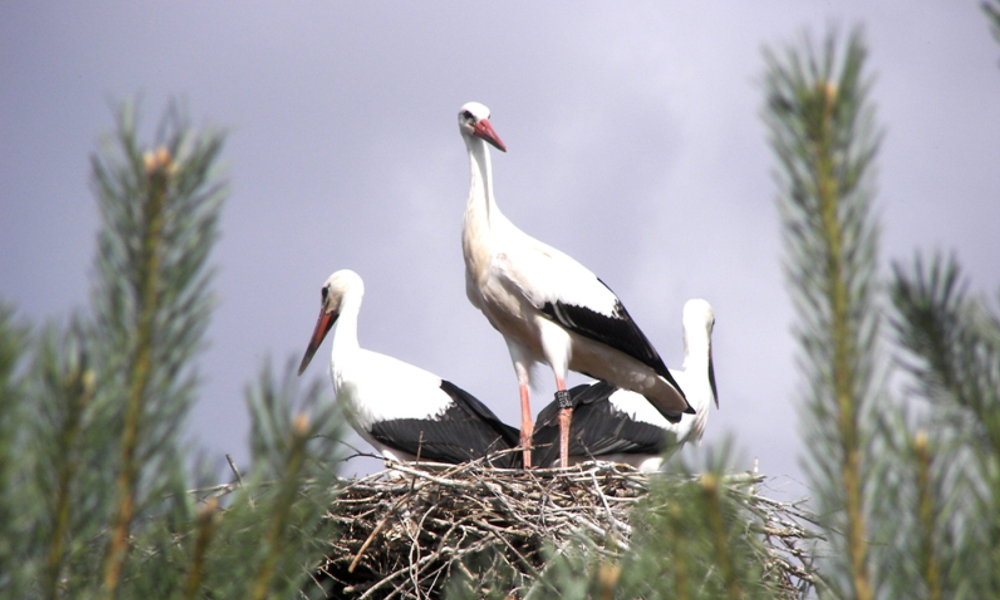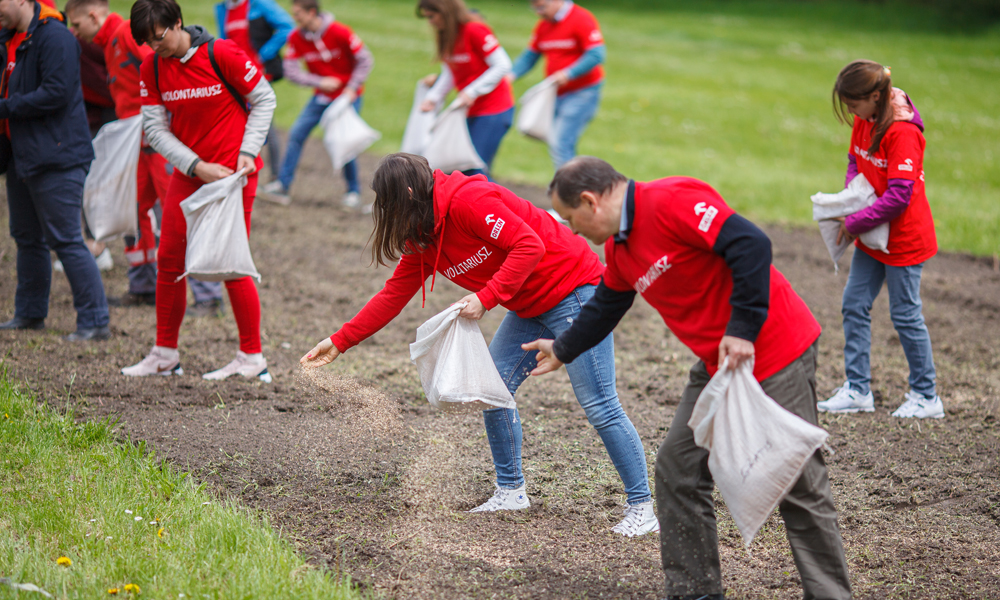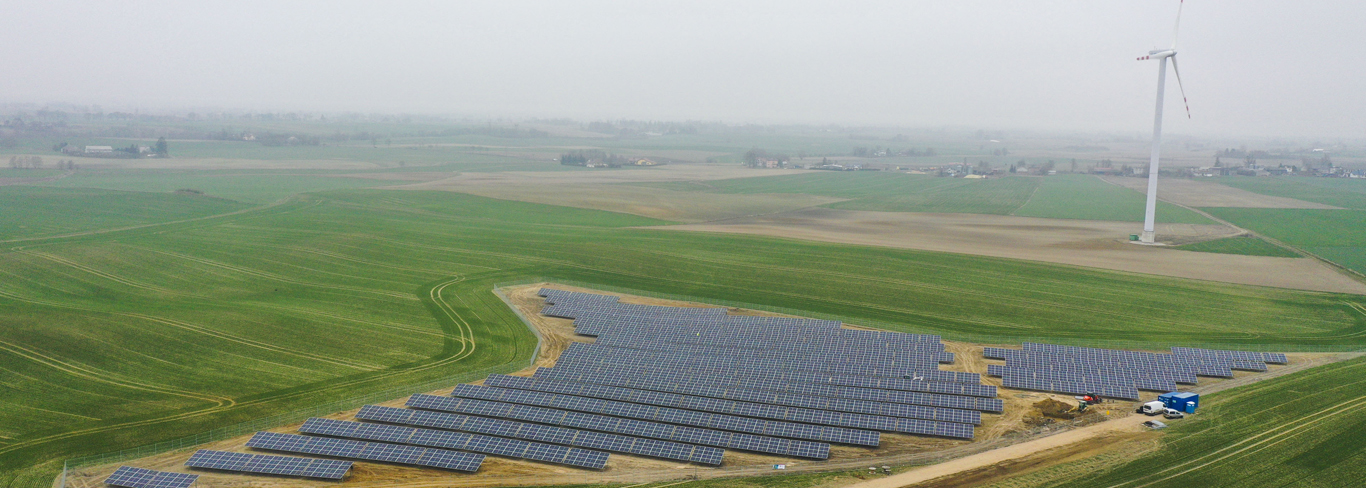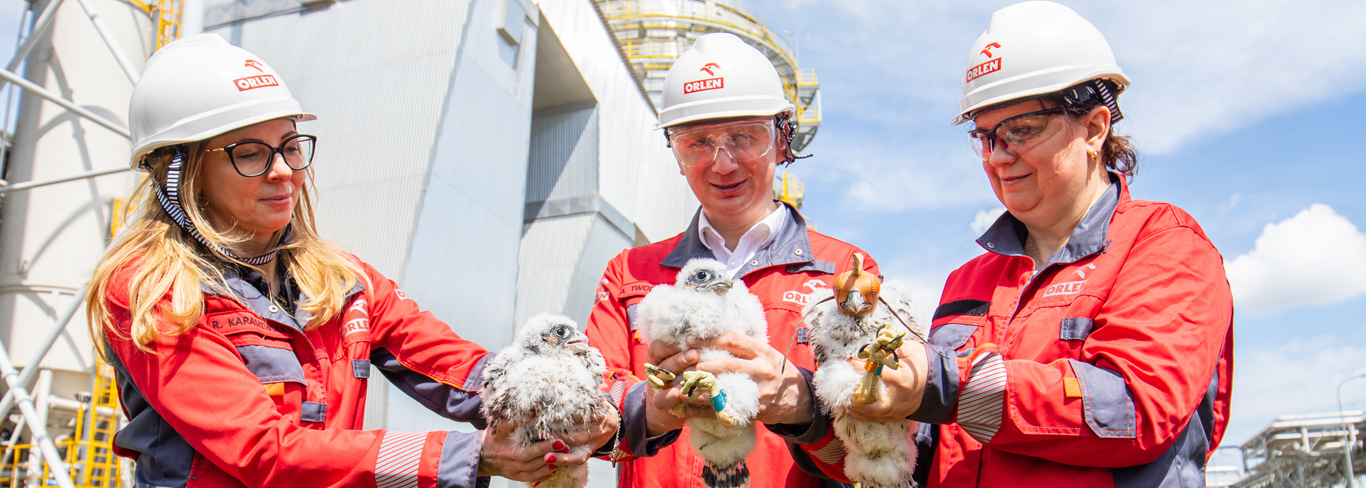
BIODIVERSITY PROTECTION
A large production company like PKN ORLEN uses the natural environment intensively, one example of which is the preparation of sites for new projects.
ORLEN Group companies participate in the Responsible Care Programme, based on the same guiding principles all over the world, but the Polish edition is Europe’s largest in terms of the scope and number of implemented projects. The projects are coordinated by the Secretariat of the Responsible Care Programme managed by ORLEN Eco under the supervision of the Polish Chamber of Chemical Industry and the Governing Board of the Responsible Care Programme. ORLEN Group companies participating in the Responsible Care Programme include ANWIL (since 1995), Unipetrol (since 1996), PKN ORLEN (since 1997), Paramo (since 2001), IKS Solino (since 2002), Basell Orlen Polyolefins (since 2003), Unipetrol Doprava (since 2011) and ORLEN Południe (since 2016). Besides activities that are mandatory under the Programme, ORLEN Group companies also run their own projects, including: ‘Tree for a Bottle’, the ‘Catch a Hare’ and ‘Catch a Hare – Junior Edition’ photo contest, the ‘Nature Watchers’ competition, the Chemical Sector Environmental Forum, and the ‘Mr Carp Restocks the Vistula’ campaign. Obe of the activities carried out in 2020 under the Responsible Care Programme was PKN ORLEN’s ‘Tree for a Bottle’ project. Due to the pandemic, its formula was changed: instead of cleaning outdoor areas, specific types of waste (used batteries, medicines and electro-waste), which very often accumulate in households, were collected from employees. In exchange for the waste, a participant received a tree seedling as the symbol of the campaign. In total, employees exchanged about 1,400 kg of waste for 680 seedlings of various plants.
In 2020, Energa Elektrownie Ostrołęka and the Friends of Ostrołęka Association held an educational campaign focusing on ornithology. A dozen or so bird feeders were set up by Ostrołęka residents, including school pupils and employees of the Ostrołęka power plant. Energa OZE engages in efforts designed to counteract the impact of hydroelectric power plants on the biodiversity of rivers and lakes, for instance by participating in regular fish stocking campaigns carried out in consultation with the local branches of the Polish Fishing Association (in 2020 nearly 300,000 fish were released to rivers and lakes, including brook trout, sea trout and pike perch), mounting fish passes at successive hydro powerplants, cooperating with the Polish Fishing Association in regular campaigns to transfer specimens of selected fish species past the dam to enable their upstream migration, as well as engaging with research institutions involved in wildlife monitoring, including the Inland Fisheries Institute of Olsztyn, which monitors eels migrating upstream at selected hydroelectric power plants.
Habitatsand protected species
The Płock production plant site and the adjacent land are nature-rich areas and home to rare, and in some cases protected, species. This was confirmed by the botanists, ornithologists, ichthyologists and other scientists conducting a wildlife survey at that location. Similar surveys were conducted by ANWIL, Unipetrol and Spolana. The list of species living near our plants often includes animals that are sensitive to the quality of the environment, such as rainbow trout in the water reservoirs in Spolana.
On the site of the Płock production plant and the adjacent areas there are nearly 290 species of fauna and flora (based on the wildlife survey made in 2017). The local residents know roe deer, rabbits, beavers and peregrine falcons to be regulars of the nearest surroundings of the plant. One surprising thing unveiled by the survey is the presence of protected bird species such as black woodpecker, kingfisher, red-backed western marsh harrier, as well as amphibians and reptiles: European tree frogs, newts, toads, lizards and grass snakes. Nearly 160 species identified in the survey are ones included in the IUCN Red List of Threatened Species, compiled by the International Union for Conservation of Nature. A vast majority of them (more than 95%) have been classified as the least concern (LC) species. Five species require particular attention – three vulnerable (VU) species, i.e. the common kingfisher (Alcedo atthis), the northern lapwing (Vanellus vanellus), the common carp (Cyprinus carpio), and two species classified by the IUCN as near threatened (NT), i.e. the European rabbit (Oryctolagus cuniculus) and the Eurasian otter (Lutra lutra).
The wildlife survey on the premises of ANWIL in 2018 identified more than 220 plant and animal species, the vast majority (more than 90%) of which are included in the IUCN Red List of Threatened Species as the least concern (LC) species. ANWIL’s site was found to be home to three lichen species featuring in the Red List of extinct and threatened lichens in Poland (VU category – vulnerable species, and NT – near threatened species); none of them was identified on the Płock site.
On the premises of both production plants, there are protected habitats listed in the Habitats Directive. In the case of PKN ORLEN, these are alder and ash floodplain forests and riparian forests (Alno-Ulmion) (91E0), broadleaved forests (Carpinion) (9170), lowland ranunculus rivers (3260) and riverain herbaceous areas (6430). In the close vicinity of the ANWIL plant there are: 35 areas of four types of protected natural habitats (including one in three subtypes) covering almost 130 ha – inland dunes with open Corynephorus and Agrostis grasslands (2330), xeric sand calcareous grasslands (6120), lowland hay meadows (6510), Alluvial forests with Alnus glutinosa and Fraxinus excelsior (Alno-Padion, Alnion incanae, Salicion albae) (91E0-1), (91E0-2), and (91E0-3).
Among the birds nesting on both plants’ sites, there are several species listed in the Birds Directive, which are also under strict protection in Poland: the red-backed shrike (Lanius collurio), the barred warbler (Sylvia nisoria), the western marsh harrier (Circus aeruginosus) , the peregrine falcon (Falco peregrinus), the corn crake (Crex crex), the common tern (Sterna hirundo), the black woodpecker (Dryocopus martius), the common kingfisher (Alcedo atthis), the common crane (Grus grus) (only on ANWIL’s premises), and the woodlark (Lullula arborea) (only on ANWIL’s premises).
The species under strict protection that inhabit the sites of the two production plants include four species of bats: the serotine bat (Eptesicus serotinus), the common noctule (Nyctalus noctula), the brown long-eared bat (Plecotus sp.), and the common pipistrelle (Pipistrellus pipistrellus).
The great number od species present on the site and in the surroundings of the Płock production plant is undoubtedly related to the proximity of protected areas: the Brzeźnica River Ravine nature and landscape complex, and two Natura 2000 sites, namely Włocławska Dolina Wisły (Włocławek Vistula River Valley, PLH040039 ) and Dolina Dolnej Wisły (Lower Vistula River Valley, PLB040003) (Anwil). Also Energa OZE carries out activities designed to identify and monitor the environmental impacts of its operations, focusing on the hydroelectric power plant effect on biodiversity in rivers and lakes. In addition, the Association of the Towns and Municipalities of the Parsęta River Basin, in cooperation with the Inland Fishing Institute of Olsztyn, monitors functioning of the fish pass on the site of a small hydropower plant in Rościno as part of the project ‘Protection of Atlantic Salmon and European River Lamprey in the Parsęta River Basin Special Area of Conservation (PLH 320007)’ (project partly financed with funds under the Operational Programme Infrastructure and Environment and Baltic Sea Conservation Foundation).
Installations operated by Energa OZE are located in protected areas, e.g. ten Natura 2000 SAC habitat areas, seven Natura 2000 SPA bird areas, twelve protected landscape areas, three national/landscape parks and two nature reserves. In total, these areas are home to nearly 230 species listed on the IUCN Red List of Threatened Species.
Based on the geographical scale of operations, one company worth mentioning is Energa Operator, whose high voltage lines cross protected areas:
|
Protected areas |
Number of areas |
Length of HV lines (km) |
|
|
|
|
|
|
|
|
|
|
|
|
|
|
|
|
|
|
|
|
|
|
|
|
|
|
|
|
All Energa Operator’s projects that involve the construction of power linesand are located near or within protected areas are subject to the environmental impact assessment procedure. The overhead lines are replaced with insulated or underground cable lines where there is an increased number of disturbances caused, for example, by tree branches or animals. This happens most often in forests or wooded land areas, when the distance to the wires is relatively short and even decreases in time (due to tree growth), or in areas inhabited by animal species (mainly birds) that may collide with the wires.
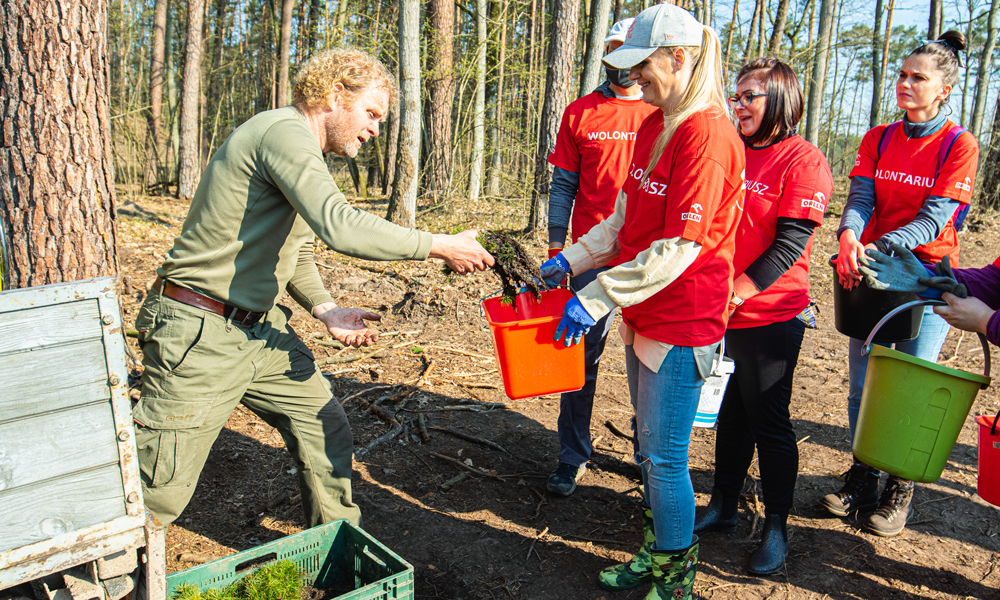
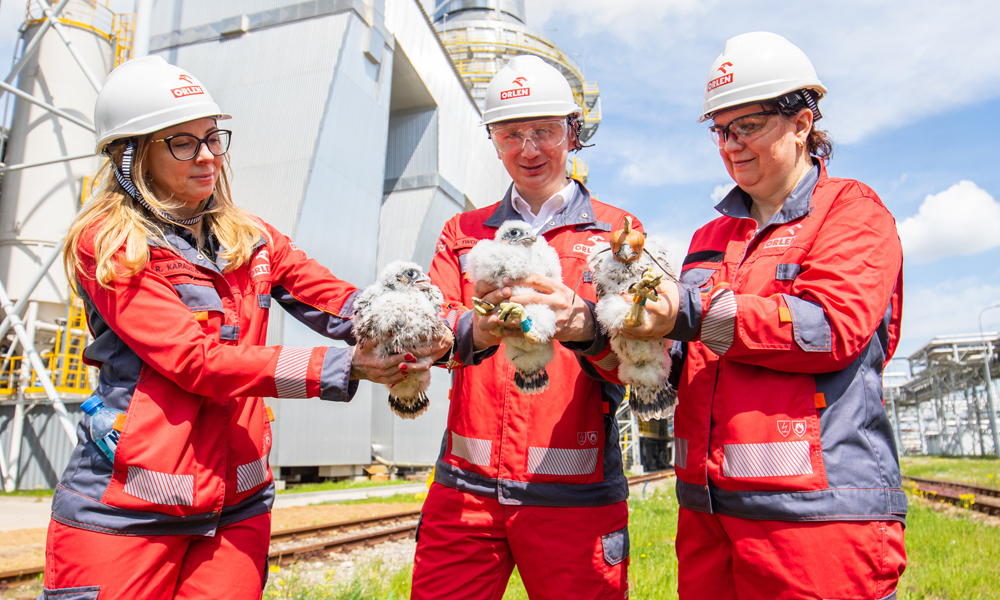
.jpg)
